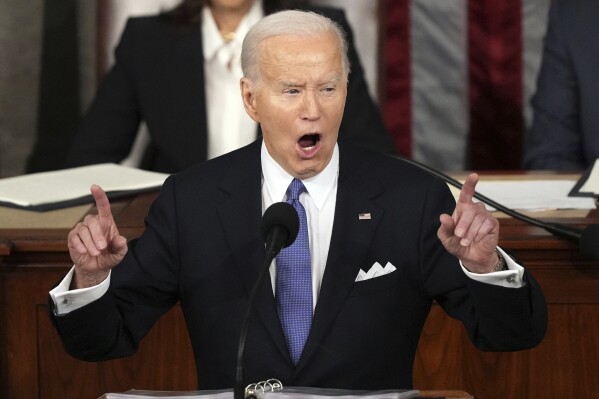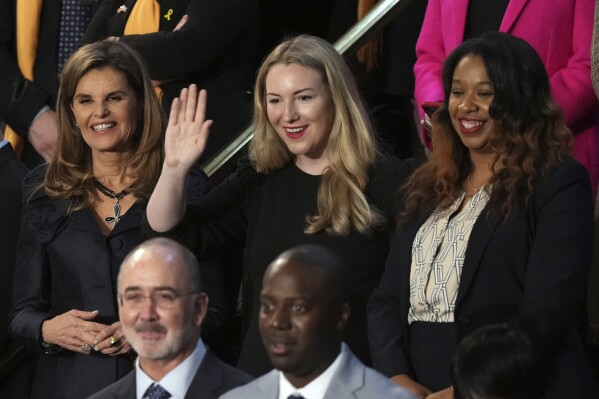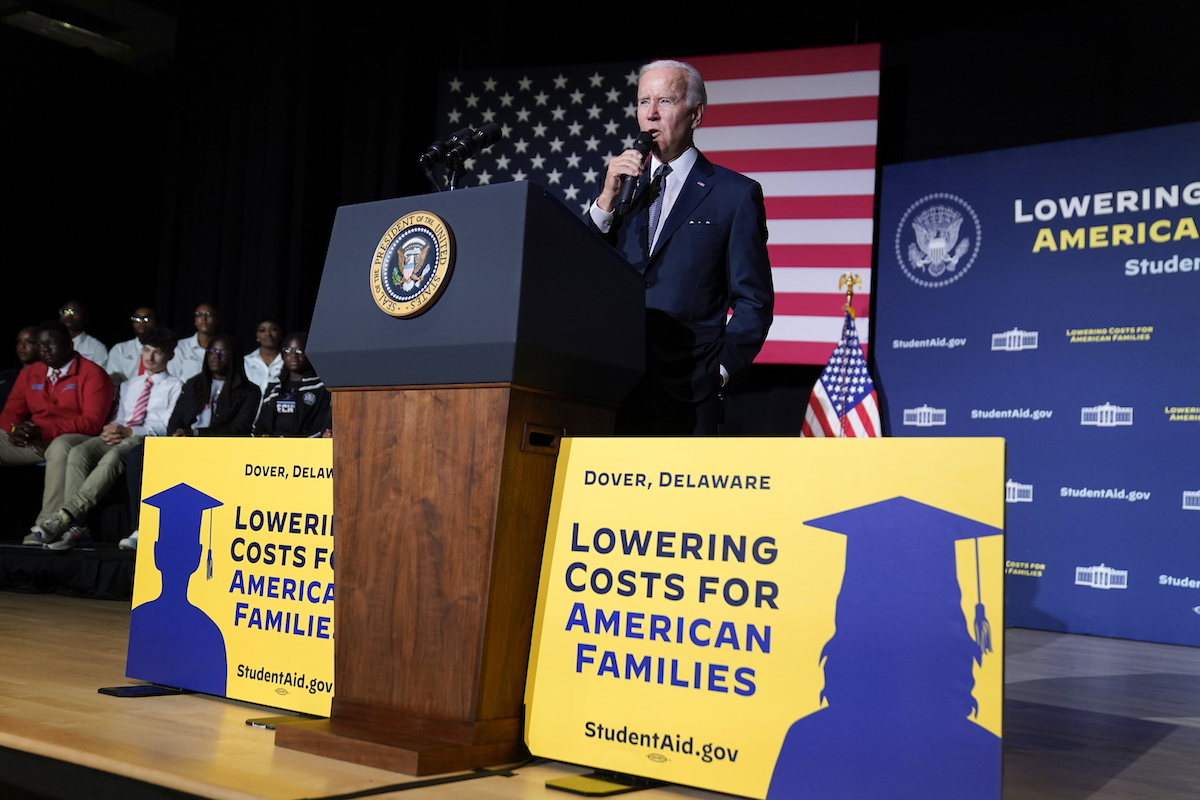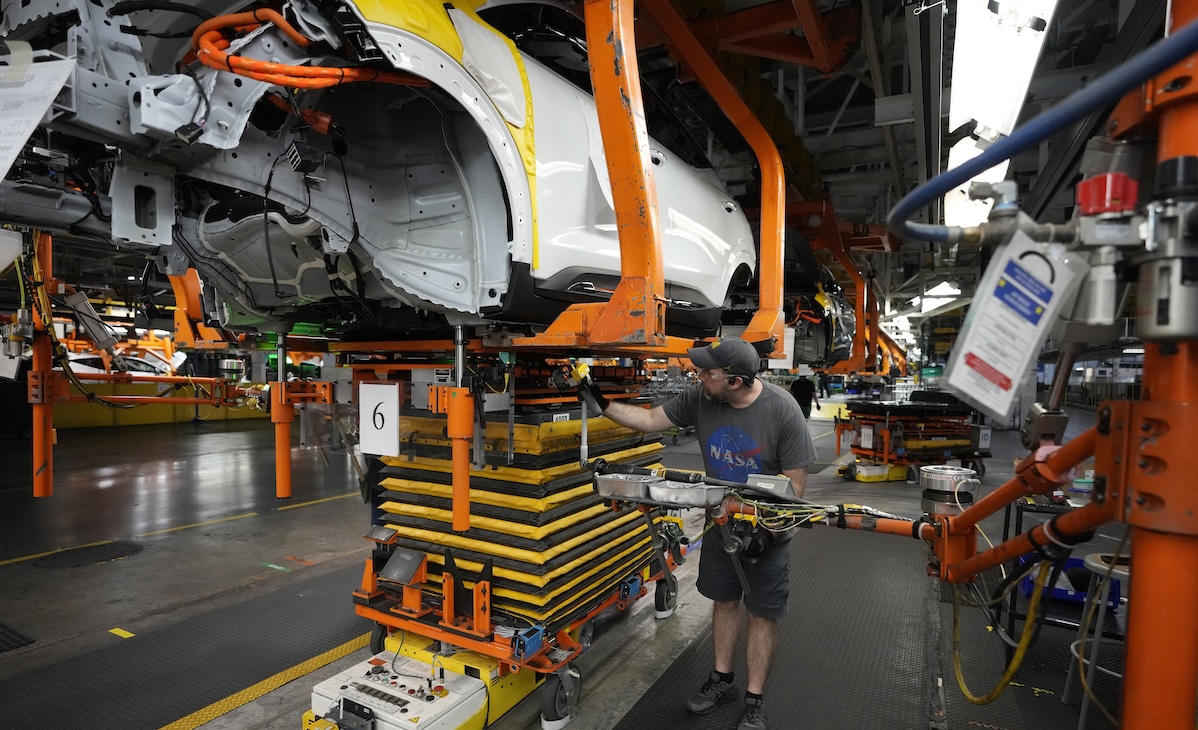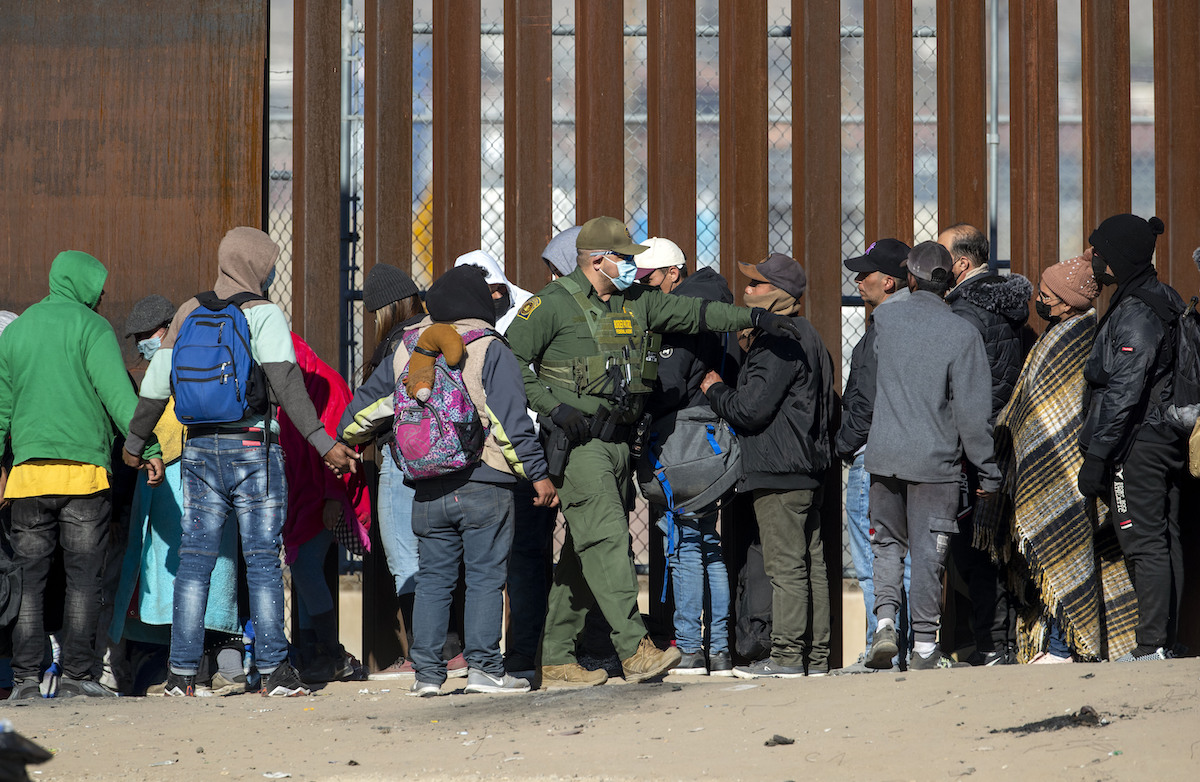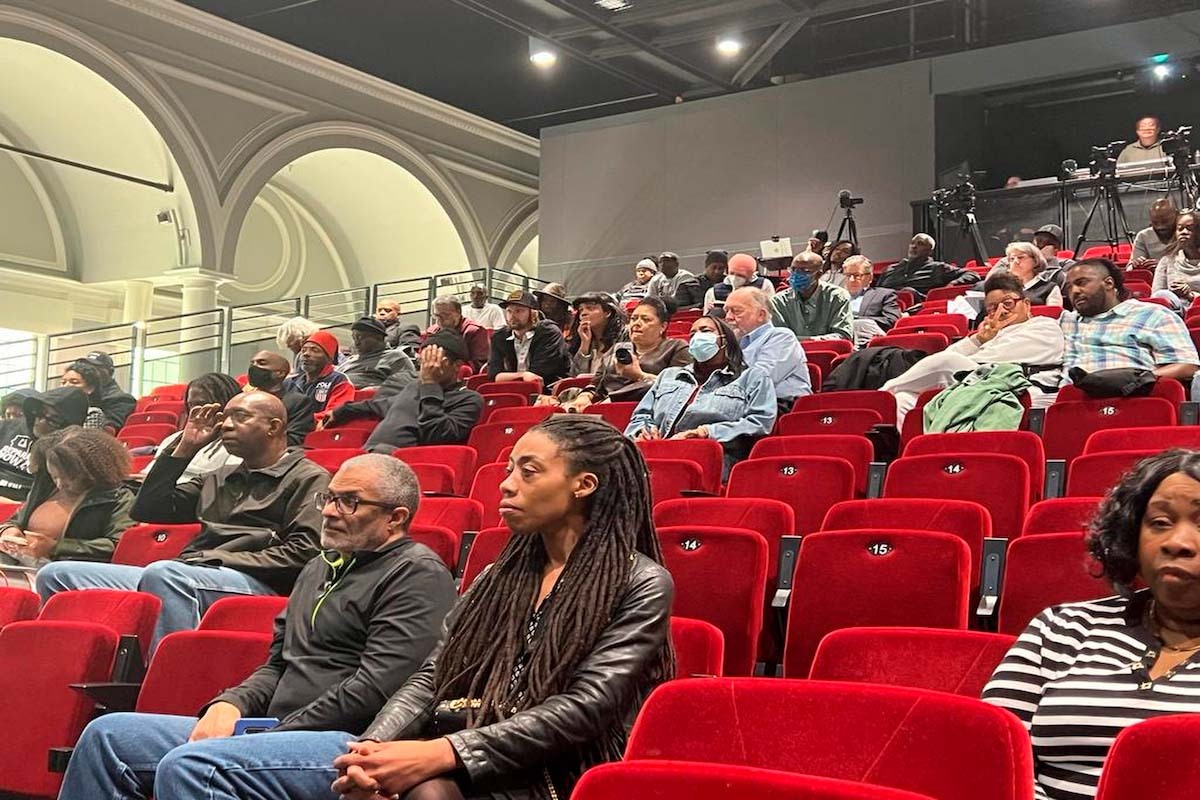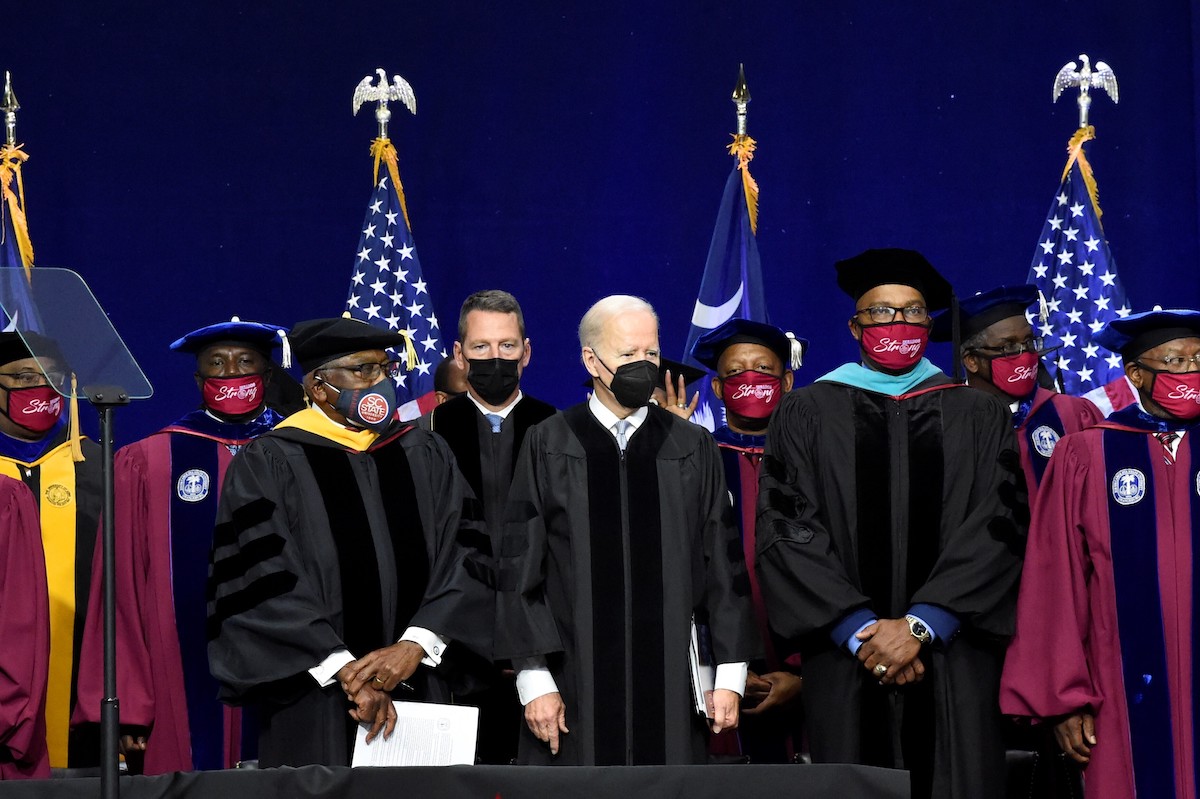(AP) — The State of the Union address is one of the durable set pieces of the presidency, a forum that almost always favors the speaker in a one-way conversation with millions of Americans.
Most of the speeches are instantly dissected, and almost as quickly forgotten. But this is a most unusual year, with President Joe Biden needing to make the case not simply that his policies warrant a second term, but that he has the personal capacity at age 81 to do the job.
He laid out the clear contours of the campaign ahead, criticizing former President Donald Trump over the Jan. 6 insurrection and going after the Supreme Court, with justices present, over its ruling that overturned Roe v. Wade.
Also, the shrinking size of a Snickers bar.
Here are some key takeaways from the speech.
HE WHO WON’T BE NAMED
Biden opened the speech with fiery denunciations of the rioters who stormed the Capitol on Jan. 6, 2021, then singled out Republicans in the chamber and GOP foe Trump. But he refused to utter Trump’s name, saying that “my predecessor and some of you here seek to bury the truth about Jan. 6.”
He wrapped that into a larger theme that democracy is threatened like no time since the Civil War, signaling a clear line of attack he will use against the man he would not name.
He also criticized “my predecessor” for Trump’s assertion that Russian President Vladimir Putin can “do whatever the hell he wants” concerning NATO allies, and he implored Congress to pass additional aid for Ukraine.
Speaking with a vigor that his supporters have said has been lacking, he set up a contrast between his internationalist view of the world and the more isolationist leaning of his “predecessor.”
Biden used almost the entirety of the speech to find ways to try to persuade Americans of the contrast.
THE OLD AGE QUESTION
Biden jokes about his age at State of the Union but talks about ‘core values’
When asked about his age and how it affects his ability to be president, Biden’s stock answer is: Watch me.
On Thursday night, he delivered what a lot of his own supporters had found wanting. It was a high-energy, forceful speech, and at times he taunted Republicans with ad-libs. When they heckled his support for bipartisan border security legislation, Biden said, “Look at the facts, I know you know how to read.”
Biden stumbled over a few words, and in the Republican response, Sen. Katie Britt of Alabama called him “dithering and diminished” but it was a more vigorous performance than other speeches where his remarks can be meandering or hard to hear. It was also a rejoinder to criticisms that Biden is too old to keep serving as president. He would be 86 at the end of a second term, and Republicans — though Trump is only four years younger — have relished slicing and dicing videos of the president to make him look as feeble as possible on social media.
Biden leaned into his age, mentioning he was born during World War II, but defended his vision for the country as fresh. “You can’t lead America with ancient ideas that only take us back.”
ABORTION ON THE BALLOT
The president said efforts to restrict abortion were an “assault on freedom,” and he derided the Supreme Court ruling that overturned Roe v. Wade, with members of the Supreme Court who were in the majority in that decision, seated just feet away.
He also welcomed Kate Cox, a Dallas mother whose fetus had a fatal condition that put her own health at risk. She had to leave the state to get an abortion. “My God,” Biden said, “what freedoms will you take away next?”
Through much of his career, Biden has not emphasized abortion rights. In his speech, he showed how much he believes that issue could be a key to a second term.
HEALTH CARE, STILL A BFD
Back to “my predecessor.” Biden playfully said that the Obama-era health care law is still a “big deal,” paying homage to the moment as vice president he used more colorful language to describe the landmark policy win for President Barack Obama. And he vowed to work to make a tax credit tied to the law permanent.
“Over 100 million of you can no longer be denied health insurance because of a pre-existing condition,” Biden said. “Well, my predecessor, many in this chamber, want to take the prescription drug benefit away by repealing the Affordable Care Act. I’m not going to let that happen.”
Biden appeared to slip in a riff about pharmaceutical companies selling their drugs at a cheaper price around the globe, telling the audience that he’d like to take them on Air Force One to several major global cities including Moscow to see how much they would save on the same drugs.
Biden quickly caught himself, saying it was “probably” the case even in Russia, and pressed ahead. “Bring your prescription with you. And I promise you I’ll get it for you for 40%. The cost you pay now.”
WAR IN GAZA GETS ITS MOMENT
Biden promises ‘no U.S. boots on the ground’ in Gaza
The bloody conflict between Israel and Hamas was an unavoidable backdrop to Biden’s speech. His motorcade took a different route to the U.S. Capitol after protesters blocked part of Pennsylvania Avenue. Inside the House chamber, some lawmakers wore keffiyehs, the black and white checkered scarves that symbolized solidarity with Palestinians.
Biden announced plans for the U.S. military to help establish a temporary pier on the coast of Gaza, an effort that the administration says should significantly boost the flow of aid into the besieged territory.
The unveiling of the plan was perhaps the most substantive element of his address that touched on the war. It allowed Biden to demonstrate that he’s taking action in the face of anger and defiance from some Democrats over his strong support for Israel even as the Palestinian death toll mounts. It also comes after Biden last week approved the U.S. military airdropping aid into Gaza.
The temporary pier, Biden said,” will enable a massive increase in humanitarian assistance getting into Gaza.”
But at the same time, he called on the Israelis to do more to alleviate the suffering even as they try to eliminate Hamas. “To Israel, I say this humanitarian assistance cannot be a secondary consideration or a bargaining chip,” Biden said.
MIDDLE-CLASS JOE
President Biden outlines policies to deal with housing crisis, prescription drugs
Biden outlined an economic vision that went big and small. He touted a post-pandemic economic recovery that didn’t sacrifice job creation to tame inflation. With housing prices still high, he proposed a tax credit that would reduce mortgage costs.
He also hammered Republicans for tax policies that favor the wealthy. “Check the numbers. Folks at home, does anybody really think the tax code is fair?”
Biden said there should be a minimum tax rate of 25% on billionaires, saying “No billionaire should pay a lower federal tax rate than a teacher, a sanitation worker or a nurse.”
The president talked about cracking down on junk fees that can chip away at Americans’ budgets and he criticized snack companies for “shrinkflation,” which means getting fewer products for the same price.
“You get charged the same amount and you got about 10% fewer Snickers in it.”
MUST-SEE, BUT NOT NECESSARILY ON TV
When Biden was elected to the Senate in 1972, the State of the Union address was appointment television for tens of millions of Americans who watched on three major networks.
Now it is so much more than a television event. The traditional ways of measuring viewers have shown a steady decline. Biden’s address last year drew the second smallest audience for the annual event in at least 30 years, according to the Nielsen company.
The audience is so fragmented that Biden’s campaign was prepared with targeted segments to pump out to specific audiences on social media. Guests whose stories were highlighted in the speech will make the rounds on local television markets to talk about the real-life impact of Biden’s policies. And look for Biden and his surrogates to find creative ways to get bits of his message to Americans who didn’t tune in on Thursday evening.
Hours before delivering the address, Biden posted on his X account a video of him getting advice on delivering the big speech from actors, including Morgan Freeman, Michael Douglas, and Geena Davis, who have played the president in the movies and TV.
PolitiFact is tracking the status of 99 promises Joe Biden made as he campaigned for president in 2020. Our team researches and rates the status of each promise on a spectrum of progress. By our measure, the majority of his promises — 63% — are Stalled or In the Works; 27% were Kept, 6% were Compromises and 2% were Broken.
Here's a closer look at the state of six of Biden’s promises. We’ll continue to update his progress in his fourth year.
Following an incremental approach, Biden said his administration would cancel $1.2 billion more in debt for almost 153,000 borrowers. The forgiveness applies to people enrolled in the Saving on a Valuable Education (SAVE) repayment plan. Biden launched this approach after the U.S. Supreme Court struck down his sweeping student loan forgiveness plan, which would have eliminated about $400 billion in student loans.
Through executive actions, Biden has OK’d about $138 billion in student debt cancellation for almost 3.9 million borrowers. Under SAVE, borrowers who make monthly payments won’t have to pay interest on their loans. About 7.5 million people are enrolled in the plan, officials said; about 4.3 million of them have no monthly payment because of the plan’s expanded income exemption.
The Education Department said Biden’s administration has approved:
$56.7 billion for about 793,000 borrowers through changes to the Public Service Loan Forgiveness program.
$45.6 billion for 930,500 borrowers through improvements to income-driven repayment.
$11.7 billion for 513,000 borrowers with a total and permanent disability.
$22.5 billion for 1.3 million borrowers through closed school discharges, borrower defense, and related court settlements.
We will assess how close Biden came to eliminating debt for undergraduate borrowers earning up to $125,000 as the end of his term nears. For now, this promise remains In the Works.
The Bureau of Labor Statistics defines automotive industry jobs in four categories. Each has grown under Biden.
Motor vehicles and parts manufacturing grew from almost 945,600 jobs when Biden was inaugurated to 1,064,100 in January 2024, the most recent month with available data.
Wholesale motor vehicles and parts grew from 342,900 to 383,900 jobs over the same period.
Retail motor vehicles and parts grew from about 1.9 million jobs to almost 2.1 million.
Automotive repair and maintenance grew from 904,900 jobs to a bit more than 1 million.
These four categories collectively added 424,700 jobs on Biden's watch. By this pace, more than 560,000 auto-sector jobs would be added in his presidential term’s remaining year. That works out to fewer than 1 million jobs over four years and omits some jobs beyond these categories, such as electric vehicle charging stations, which Biden cited in making the promise.
The BlueGreen Alliance, which backs pro-environment policies including electric vehicles, estimated that 188,000 new electric-vehicle-related jobs have been created from already-announced projects. Adding all 188,000 jobs to Biden's total wouldn't get him to 1 million, and time is running out to reach his ambitious campaign goal.
So far, we’ll rate this promise In the Works.
On his first day in office, Biden proposed a bill to create a pathway to citizenship for millions of immigrants living in the U.S. illegally. But the bill went nowhere.
In February, a bipartisan group of senators unveiled a new immigration bill intended to reduce illegal immigration at the U.S.-Mexico border.
Although Biden said he would sign it into law if it reached his desk, it failed in the Senate with a 49-50 vote. The measure didn’t include a path to citizenship for people living in the U.S. illegally but sought to raise the initial asylum screening standard.
The prospect of Biden signing a bill granting a pathway to citizenship seems unlikely in a Republican-controlled House. For now, we rate this promise as Stalled.
People listen to the California Reparations task force as they vote on recommendations, May 6, 2023, during a meeting at Lesser Hall in Mills College at Northeastern University in Oakland, California. (AP)
After winning the presidency, Biden said "The African American community stood up again for me. You've always had my back, and I'll have yours."
Although Biden kept his campaign promise to reduce the rate of uninsured African Americans and has worked toward his promise to make historically Black colleges and universities more affordable, he’s made scant progress toward the study of reparations. He did not promise to pay reparations — only to support its study.
Since 1989, Democrats have introduced bills calling to study reparations for African Americans. These ideas gained more attention in 2020 after a white Minneapolis police officer killed George Floyd, a Black man. Rep. Sheila Jackson Lee, D-Texas, reintroduced related legislation in January 2023, but it has not received a vote in the Republican-led House.
For now, we’ll rate this Promise Broken.
Biden's promise to decriminalize marijuana moved forward in 2023 but awaits the U.S. Justice Department's review. Federal law so far classifies marijuana as a Schedule 1 drug under the Controlled Substances Act; the classification is meant for the most dangerous substances, including heroin and LSD.
In August 2023, the federal Department of Health and Human Services recommended that the Drug Enforcement Administration reschedule cannabis from Schedule 1 to Schedule 3, which would put marijuana on par with some doses of codeine, ketamine, and anabolic steroids.
In January, Health and Human Services, in a 252-page recommendation, acknowledged cannabis as having an accepted medical use and relatively low potential for abuse.
There is no mandated timeline for the federal government to act, and the Drug Enforcement Administration has historically taken years to do so, Paul Armentano, deputy director of NORML, a group advocating for de-scheduling marijuana, told PolitiFact.
For now, this promise remains In the Works.
Biden vowed to invest $18 billion in four-year historically Black colleges and universities and other minority-serving institutions. Biden hasn’t reached that level of investment, but experts say his administration has taken many steps toward fulfilling this promise.
Biden’s administration has invested more than $7 billion in HBCUs, with $1.7 billion allocated for grants to support low-income students and make HBCUs more affordable. The largest sum, $2.7 billion, came from the 2021 American Rescue Plan, which Congress passed during the COVID-19 pandemic. Also in 2021, Biden invested $1.6 billion in Capital Financing Debt Relief to discharge HBCUs’ debt.
In 2023, the Education Department announced $93 million in new research and postsecondary grants for minority-serving colleges and universities.
Despite a significant increase in funding, the Biden administration's improvements totaled less than half of the promised amount. So far, we rate this pledge Compromise.


